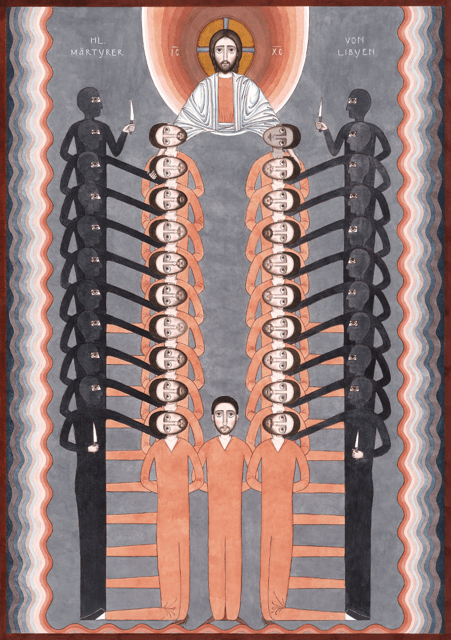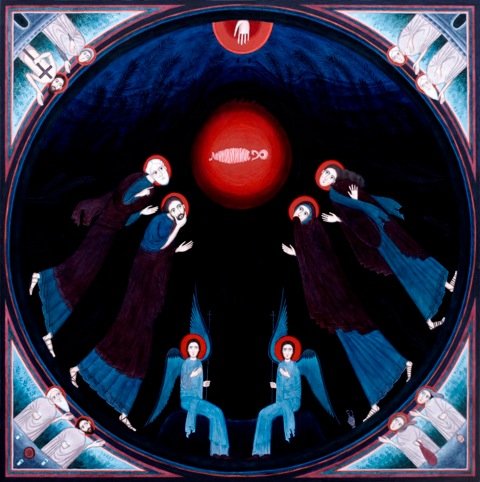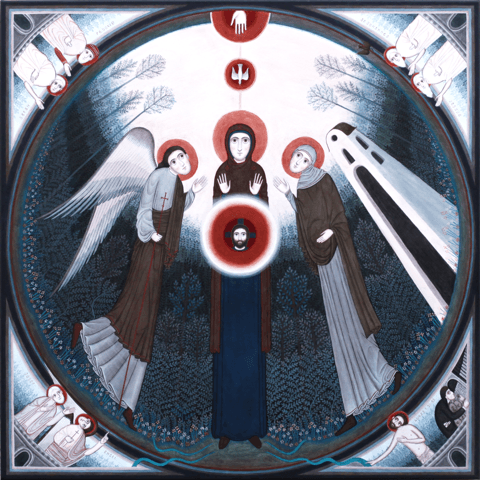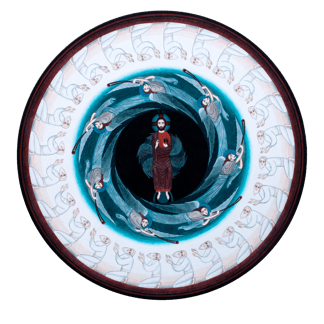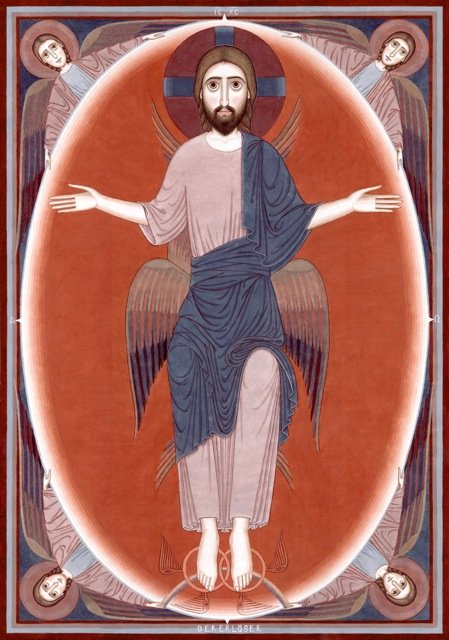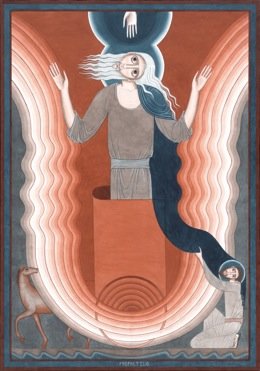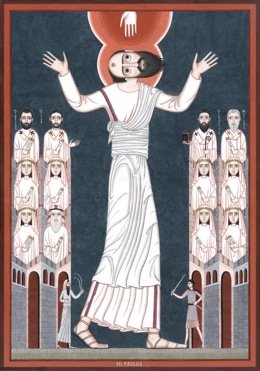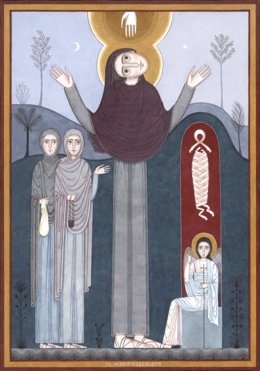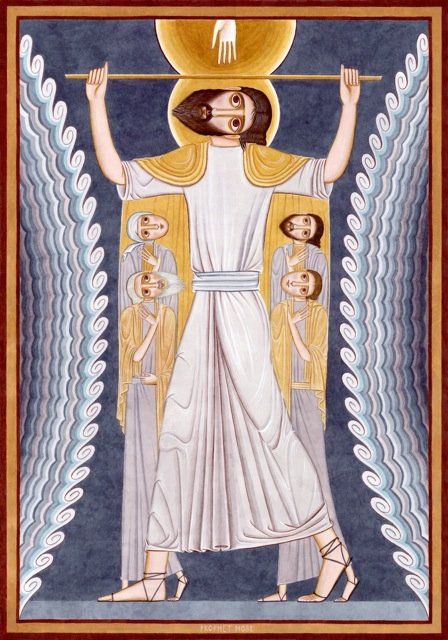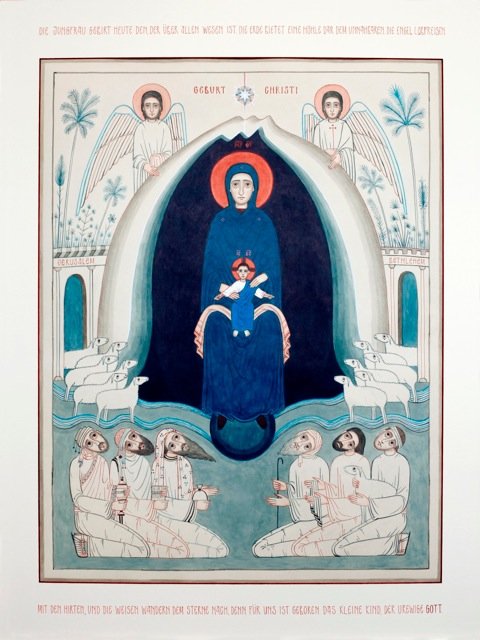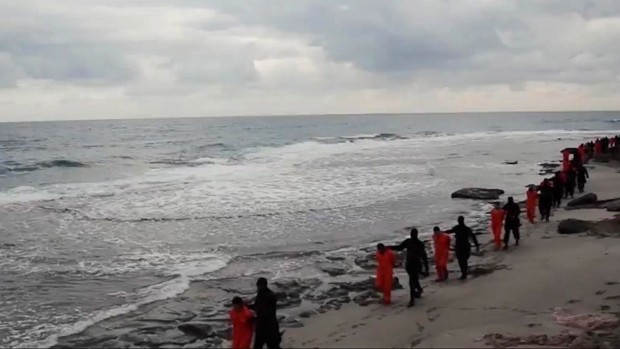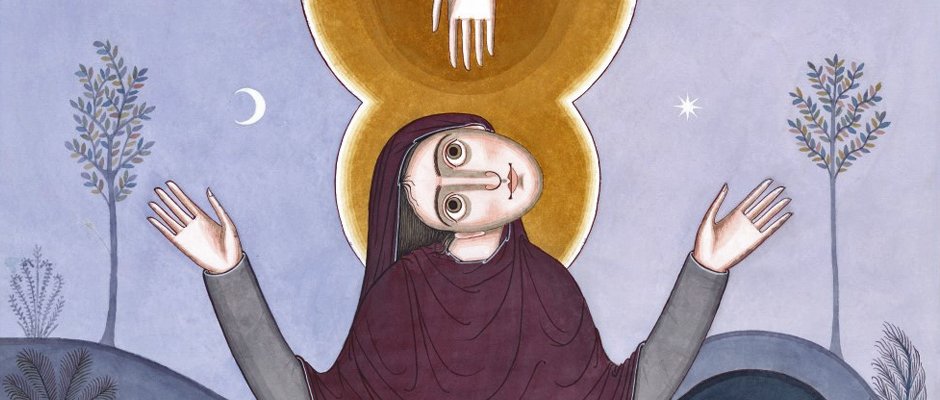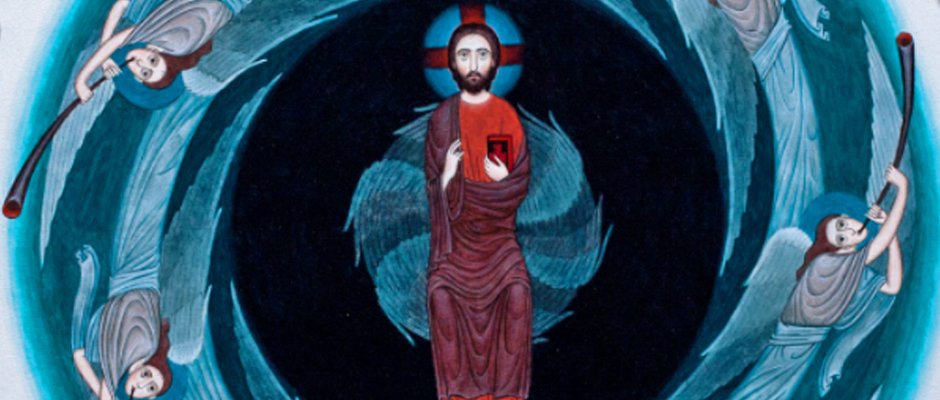
Art historians have convinced us long ago that good art must always be original, and that the artist must ever search for new forms of expression. This cult of novelty and progress had led to an immense degradation of values; the mere gesture and shocking content became all-important. Artists have lost their way among frantic attempts to find a “new voice”, completely abandoning tradition and their own unique personal approach. The fear of being considered an “epigone” stripped them of their ability and courage to enter into a dialogue with the past. Many of them have also let political correctness paralyze their independent thinking. They steer away from moral discourse and engage into trendy obscenities which are guaranteed to be hailed by the critics as “avant-garde”.
Art has been stripped of ideas and its educational role. The mediaeval Biblia pauperum has been replaced by a lurid and shallow magazine cover. Traditional topics are considered to be in poor taste, and religious inspiration – the historical cornerstone and foundation of Western art – has become an obstacle to a successful artistic career and public recognition.
In this world of chaos, among the banal pseudo-intellectual games, the work of Nikola Sarić – a Serbian painter who lives and works in Hannover, Germany – stands proudly alone. Sarić placed his complete trust in tradition, the Byzantine canon, antique inspirations, the iron discipline of icon-painting, and the Platonic immortality of beauty and form. However, his attachment to history and well-tried artistic patterns is eminently creative and even heroic. Nikola takes up the themes which are commonly ignored, and even feared, by other contemporary artists. His work, firmly grounded in the confessional and pictorial tradition of Eastern Orthodoxy, reflects in a unique way the clear and present dangers threatening Christianity and Western civilization which are being so blissfully ignored by politicians, writers, and painters. In one of his paintings entitled “Martyrs of Libya”, Sarić shows a group of Coptic Christians, willing sacrifices for their faith and civilization, just before being butchered on a seashore by the killers from the Islamic State. The images of the victims, sacralized in accordance with the formal Byzantine canon, are piled up in two vertical rows, quite contrary to the post-Renaissance convention and the common artistic sense. The martyrs, shown in the presence of Christ, are depicted in a static and ascetic fashion, as if we were seeing them from a great temporal distance and through the lens of some ancient lives of the saints who had found their eternal glory in martyrdom. In this perceptual context, our terrifying times take on a dramatic and tragic dimension against the background of the great Christian tradition, the source of Western civilization, which is now facing previously unknown perils. There is nobody to defend it, there are no artisans who would keep repeating the well-tested prayer of the perfect forms and acts of faith. Nikola Sarić is one of these knights errant, these lonely warriors who have decided to bear witness and prove that the true art does not have to shy away from tradition. By coming back to history and repeating the long-revealed truths, he finds courage to document the most shocking events of our century. It is precisely this boldness in searching for an honest path that runs contrary to the easy highway of the artistic and political establishment that makes Sarić a vanguard artist who speaks the truth in the times when the truth is buried under a deep and cowardly silence.
.
Aleksander Rybczyński
..
.
HEROICZNE ŚWIADECTWO NIKOLI SARICA
Krytycy sztuki nauczyli nas, że sztuka musi być oryginalna, musi ciągle poszukiwać i odkrywać nowe formy wyrazu. Ten trend nowości, postępu, doprowadził do niesłychanej degradacji wartości: najważniejszy stał się gest i szokujący temat. Artyści zagubili się próbując mówić “nowym głosem”, zupełnie zapominając o tradycji i swoim własnym, niepowtarzalnym tonie. Lęk przed etykietką epigona skutecznie odebrał artystom zdolność i odwagę do dialogu z przeszłością. Większość z nich pozwoliła się także sparaliżować polityczną poprawnością, unikając moralnego dyskursu, kosztem modnej obsceniczności, zyskującej krytyczną aprobatę i miano awangardy.
Sztuka została odarta z idei i pozbawiona edukacyjnej funkcji. Średniowieczną “Biblię Pauperum” zastąpiono efektowną i pustą okładką ilustrowanego tygodnika. W złym tonie jest podejmowanie odwiecznych tematów, a inspiracja religijna, która była przecież kamieniem węgielnym i podstawą sztuki zachodniej stała się barierą, zamykająca drogę do kariery i uznania.
W świecie chaosu, na scenie banalnych pseudointelektualnych gier zupełnie wyjątkowe jest zjawisko twórczości Nikoli Sarica, serbskiego artysty, mieszkającego i tworzącego w niemieckim Hanowerze. Saric całkowicie zawierzył tradycji, kanonowi sztuki bizantyńskiej, antycznym inspiracjom, żelaznej dyscyplinie ikony i wierze w nieprzemijalność piękna i formy. Jego przywiązanie do historii i dobrze sprawdzonych przez wieki wzorów, jest jednak poruszająco twórcze i wręcz heroiczne. Nikola podejmuje temat, którego prawie nikt nie odważa się nawet zauważyć. Zagrożenie chrześcijaństwa i zachodniej cywilizacji, beztrosko ignorowane przez polityków, pisarzy i malarzy, znajduje unikatowe świadectwo w twórczości serbskiego twórcy, wywodzącego się z prawosławnej cerkwi. W jednym ze swoich obrazów “Martyrs of Libya”, Saric przedstawia chrześcijan koptyjskich, męczenników wiary i cywilizacji, tuż przed bestialskim mordem, dokonanym na brzegu morza przez oprawców Państwa Islamskiego. Dwa rzędy ofiar, uświęcone w kanonie bizantyjskiej formy, są spiętrzone wertykalnie, zupełnie inaczej, niż wymaga tego porenesansowa tradycja i zdrowy malarski rozsądek. Męczennicy, przedstawieni w obecności Chrystusa, namalowani są statycznie i ascetycznie tak, jakbyśmy patrzyli na nich z dystansu wieków i historii świętych, którzy w męczeńskiej śmierci odnaleźli życie wieczne. W tym kontekście, nasza napawająca grozą współczesność nabiera dramatycznego i tragicznego wymiaru na tle wielkiej tradycji chrześcijańskiej, będącej źródłem cywilizacji zachodniej, zagrożonej, jak pewnie nigdy wcześniej w historii. Nie ma jej obrońców, nie ma rzemieślników, którzy powtarzaliby sprawdzoną modlitwę doskonałych form i aktów wiary. Nikola Sarić jest jednym z samotnych rycerzy, wojowników, którzy zdecydowali się dać świadectwo i potwierdzić, że prawdziwa sztuka nie musi uciekać od tradycji. To właśnie on, powracając do historii i powtarzając dawno już objawione prawdy, znajduje odwagę, by dokumentować najbardziej wstrząsające wydarzenia naszego stulenia. Dzielność w poszukiwaniu uczciwej ścieżki, biegnącej wbrew uładzonej autostradzie establishmentu, czyni Sarica twórcą awangardowym, mówiącym prawdę w czasach, gdy prawda jest głęboko przemilczana.
.
Kroniki poetyckie – fragment
.
Aleksander Rybczyński
Dziękuję Mariuszowi Wesołowskiemu za pomoc i merytoryczne uwagi. AR
.
.
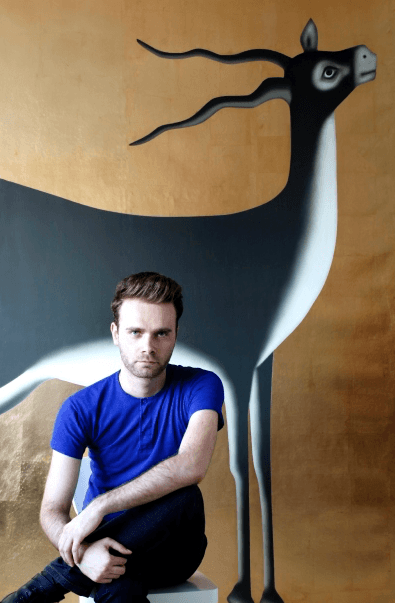
Nikola Sarić
info@nikolasaric.de
www.nikolasaric.de
.
Biography
.
Nikola Saric was born in 1985 in Bajina Bašta, Serbia. In 2000, he moved to Belgrade to study at the TehnoArt School. In 2005, he began studying at the Faculty of Applied Arts of the University of Belgrade; one year later he moved to study at the Academy of Serbian Orthodox Church for Arts and Conservation in the department of church art, where he graduated in 2014. Since 2011 Nikola Saric lives in Hannover, Germany. Nurtured in the practice of church art, his artistic expression is derived from sacred Graeco-Roman art and, generally speaking, the art of the classical antiquity and the medieval period. In his works, through the immediacy and simplicity of visual elements, he conveys the intuition of a “transfigured world”. Using different techniques and materials, Nikola tries to describe this unimaginable world. His interpretations reflect the personal spiritual experience as well as the tradition that breathes and evolves within the concepts of contemporaries.
..
Individual Exhibitions (selected)
.
2016 | Παραβολές και Μάρτυρες (Parables and Witnesses), Mount Athos Center, Thessaloniki
2016 | Ikonen und Chimera, Kunstsalon Villa Artista Art Gallery, Hannover
2016 | Satt mich sehen an deinem Bilde (Satisfied With Seeing Your Likeness), Mariensee Abbey, Neustadt am Rübenberge
2015 | Irdische Geschichten mit himmlischer Bedeutung (Earthly Stories With A Heavenly Meaning),
Coptic Orthodox Monastery, Höxter-Brenkhausen
2015 | Wie durch einen Spiegel – Biblische Ikonographie heute, Religionspädagogisches Institut, Loccum
2014 | Laokoon (Laocoon), konnektor – forum for the arts, Hannover
2014 | Demetrius – Begegnung mit dem Heiligen, Gartenkirche, Hannover
2012 | Separation, konnektor – forum for the arts, Hannover
2009 | A World that cannot be imagined, Galerie Otklon, Belgrad
.
Group Exhibitions (selected)
.
2016 | GEWALT|MACHT|HERRSCHER – Kunstpreis Worpswede 2016 (Worpswede Art Prize 2016), Hotel Adlon, Berlin
2016 | Akte, Aktionen & Aktiva (Nudes, Actions & Assets), Kunstsalon Villa Artista Art Gallery, Hannover
2016 | Wildheit/Zähmung (Wildness/Taming), Landestrost Castle, Neustadt am Rübenberge
2016 | Икона у контексту 21. века (The Icon in the Context of the 21st Century), Museum of Herzegovina, Trebinje
2015 | 87th Autumn Exhibition by Artists from Lower Saxony, Kunstverein Hannover
2015 | Савремени иконопис у Србији (Contemporary Icon Painting in Serbia), Cultural Centre of Novi Sad
2013 | Überbleibsel (Leftovers), konnektor – forum for the arts, Hannover
.
Publications
.
2016 | Zeugen – mit Gedichten von Nikola Ðolović,
ISBN 978-3-9817939-0-1
2015 | Irdische Geschichten mit himmlischer Bedeutung, Gleichnisse Jesu in Bildern von Nikola Sarić,
ISBN 978-3-00-050210-1
2014 | Akathist an den Hl. Demetrius, in Bildern von Nikola Sarić,
ISBN 978-3-00-046990-9
..
.
Diocesan choir of Coptic Christians, Tripolis

